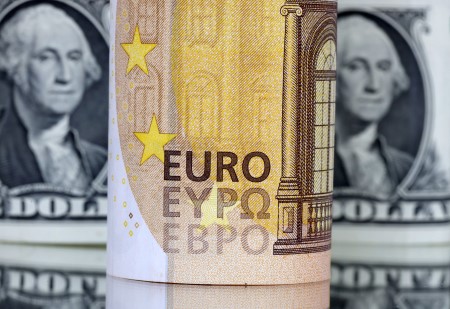




Philippines Trade Update: Trade trajectories trend along
 DOWNLOAD
DOWNLOAD

Policy Rate Updates: Double cut finale
 DOWNLOAD
DOWNLOAD

Monthly Economic Update: One for the road
 DOWNLOAD
DOWNLOAD


US recap: EUR/USD rebound fizzles before Friday’s lows as risks persist

Sept 27 (Reuters) – The dollar rose on Tuesday after unexpectedly strong U.S. home sales and consumer confidence reports enhanced the U.S. economic outlook, in contrast to Europe’s increasingly dire inflation and recession risks that sent gilt and euro zone bond yields sharply higher and riskier assets lower.
Brief and corrective dollar pullbacks against the euro and sterling hit the wall by Friday’s 0.9668 and 1.0840 lows.
Massive gilt yields gains of 27bp and 39bp in 2-year and 10-year tenors spread across European government bonds and to less extent Treasuries, funneling funds back into the relative safety of the dollar.
Though strong, above forecast U.S. single-family home sales and consumer confidence also displayed modest signs of disinflation.
Dollar-supported upside in short-term Treasury yields diminished following St. Louis Fed President James Bullard’s comment that fed funds would probably peak near 4.5%, a level market pricing had already slightly surpassed.
Sterling was about flat after slipping from Tuesday’s 1.0837 high, which is near Friday’s low, but failed to sustain the rebound from Monday’s 1.0327 record low even after BoE Chief Economist Huw Pill said the UK central bank is likely to deliver a “significant policy response” to the government’s fiscal stimulus plans.
EUR/USD was down about 0.1% and 1% off Tuesday’s 0.9670 high on EBS. The euro’s outlook is dimmed by the deteriorating prospects for Europe’s economy amid increasing energy insecurity that threatens significant losses for businesses and soaring costs for consumers and governments trying subsidize energy costs.
USD/JPY’s early dip with Treasury yields reversed in NorAm trading, lifting prices close to major 145 options expiries this week and ahead of Thursday’s 24-year peak at 145.90 on EBS that triggered Japanese intervention.
But Tuesday’s BOJ yield curve control buying of JGBs to cap 10-year yields at 0.25% reinforced the impression that monetary policy would not be giving the MOF any assistance in supporting the yen anytime soon.
Therefore, USD/JPY drops on intervention are buying opportunities unless U.S. disinflation takes hold faster than expected and peak Fed funds pricing has already been witnessed.
Otherwise, a close above 145 would suggest 145.90 is in play, and perhaps tech targets near 150.
High-beta currencies also shed earlier gains. And a strong start for bitcoin and ether became losses as the S&P 500 breached June’s major lows.
Russia-related risks and energy price cap plans will be watched along with U.S. PCE data Friday, followed by non-farm payrolls next Friday.
(Editing by Burton Frierson; Randolph Donney is a Reuters market analyst. The views expressed are his own.)
This article originally appeared on reuters.com





 By Reuters
By Reuters